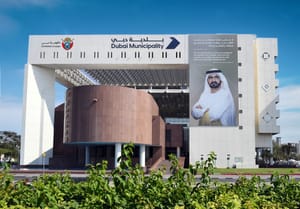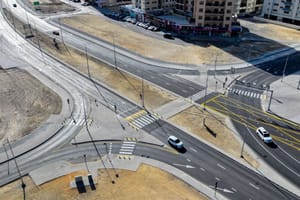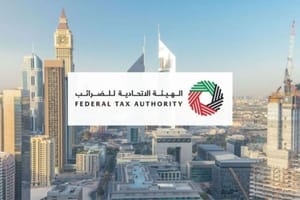As the UAE's economy enters 2024, a more favorable oil output quota will lead to oil GDP once again playing a supportive role in economic growth.
The UAE is set to emerge as the best-performing economy in the GCC in 2024 with an overall GDP growth of 4.0 percent after navigating a soft 2023, according to forecasts made by Capital Economics.
As the economy heads into 2024, a more favorable oil output quota for the UAE will mean that oil GDP becomes supportive of economic growth once more.
“With non-oil activity likely to hold up well too, we have penciled in overall GDP growth of 4.0 percent. This would make the UAE the best-performing economy in the Gulf,”
James Swanston, Middle East and North Africa economist at Capital Economics said in a report.
The International Monetary Fund (IMF) has projected that the Emirates’ economy would expand at 3.9 percent in 2024 as compared to 3.6 percent this year regardless of geopolitical headwinds and uncertain global recovery prospects. The World Bank projected the GCC's second-biggest economy to grow at 3.3 percent in 2023 driven by robust domestic demand, particularly across tourism, real estate, construction, transportation, and manufacturing sectors.
Swanston noted in his report that at 7.9 percent growth in 2022, the UAE’s economy expanded at the fastest pace recorded since 2006. Estimates from the Ministry of Economy showed that the oil sector grew by around 11 percent on the back of higher oil output while the non-oil sector expanded by a solid 6.0 percent.
This year, the UAE is likely to run twin budget and current account surpluses despite contending with lower oil prices alongside lower oil. In turn, the government has scope to keep fiscal policy loose – federal government spending is already planned to be 7.0 percent larger than that budgeted for 2022, the Capital Economics analyst said.
“Supportive fiscal policy is one factor that is underpinning robust activity in the non-oil economy. The UAE’s PMI remained close to multi-year highs in July and, in the past form at least, would be consistent with non-hydrocarbon GDP growth of around 2.0 percent quarter-on-quarter in Q2 and at the start of Q3,”
said the report.
Brent crude has recovered recently but, so far this year, it is 20 percent lower compared to its average of close to $100 per barrel in 2022. This has weighed on oil export receipts and, in turn, government revenues.
Although low-profile activity data for the UAE point to strong activity in the non-oil economy, that won’t be enough to offset the impact of oil production cuts. However, prospects for next year are better, Swanston said.
“There appears to have been a marked slowdown in GDP growth at the start of 2023. Indeed, the Ministry of Economy’s recently-published estimate for Q1 showed that growth eased to 3.8 percent year-on-year. The non-oil economy came off the boil, with growth clocking in at 4.5 percent YoY, but the chief driver of the slowdown was the oil sector. On the back of oil production cuts since last October, oil GDP expanded by just 1.9 percent YoY in Q1,”
Capital Economics noted.
The UAE’s oil production was reduced from 3.05 million bpd at the end of Q1 to 2.9 million bpd in June, in line with Opec+ agreements. That leaves output at its lowest level since Q4 2021 and, in year-on-year terms, it is now contracting.
Even as the dollar peg has forced the UAE to raise interest rates in line with the Fed over the past 18 months, private sector credit growth has accelerated and clocked in at 6.0 percent YoY in April – close to its fastest pace in eight years.
“This is likely to have been driven in part by the real estate sector. Residential prices in Dubai were up by 11 percent in June compared to the end of 2022 on the back of stronger demand. By comparison, prices in Abu Dhabi have only edged up by 2.0 percent over the same period,”
said the report.
Dubai’s hospitality sector has also recovered well since the pandemic. Visitor arrivals so far this year are running slightly above their pre-pandemic seasonal norms. On the back of this, performance indicators for hotels are strong – occupancy rates are running at just below their pre-virus levels and daily rates per room are around 5.0 percent higher, according to Capital Economics.
News Source: Khaleej Times









